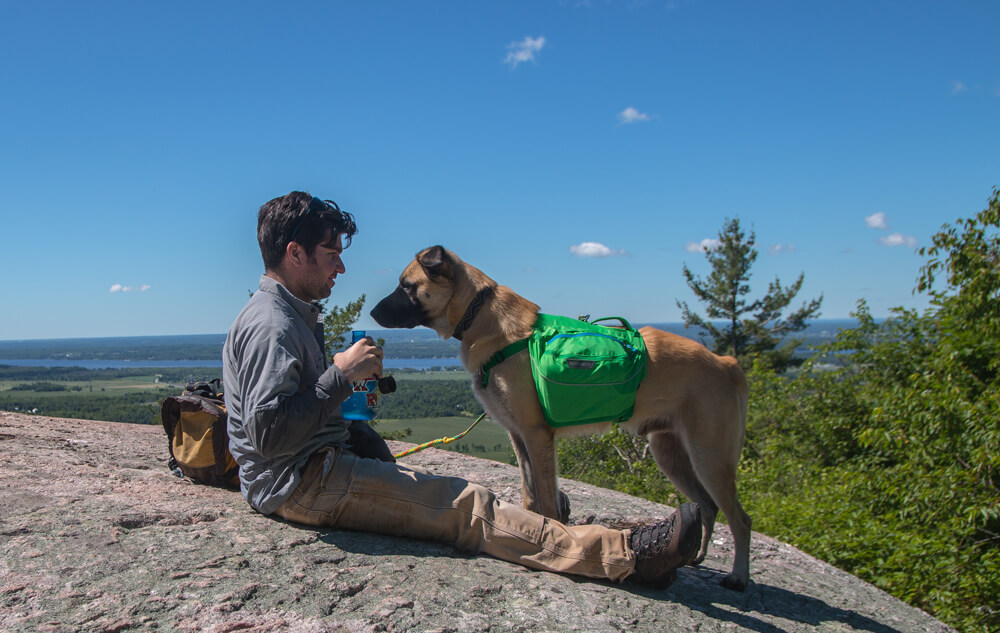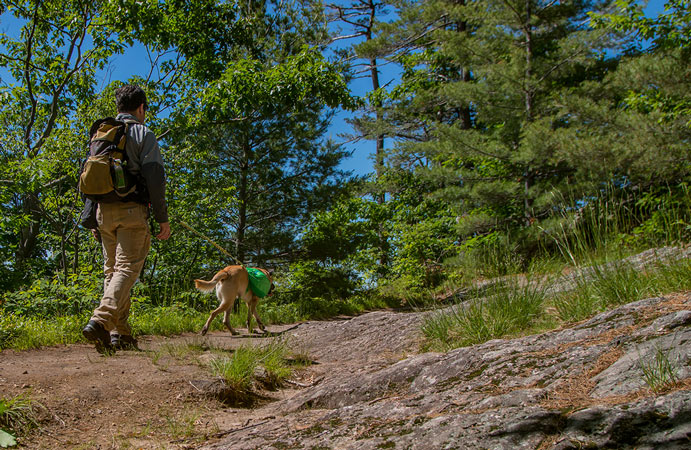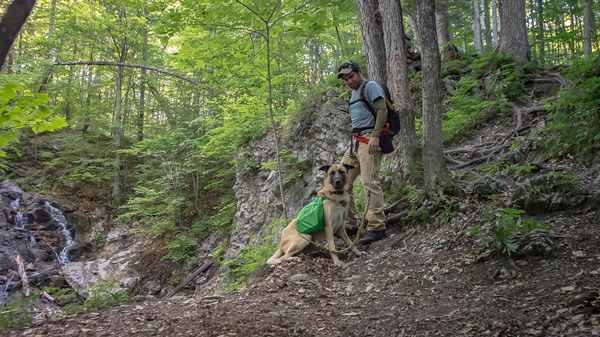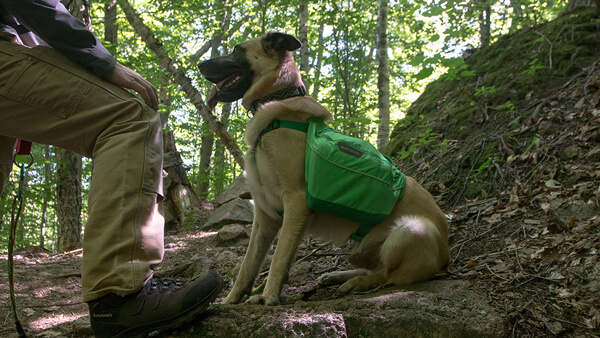
Getting out for hikes with a dog is appealing for many people, and most any dog would be thrilled to join in on the fun. Just like any preparations you might personally make, your dog also needs certain considerations met so that you can both have an excellent time on the trail.
PREPARATION:
Success starts long before you hit the trail and can be a slow process. Think about hiking with your dog as a journey, not a destination. Time spent at home working with your adventure buddy is going to pay off on the trail.
Work on training obedience and trail manners. Having this stuff on lock will make life much easier when you’re enjoying a new and unfamiliar environment. Aside from good leash manners, work on helping your dog stay calm in any setting. If you’re not sure how to get the results you want, work with a trainer.
Discuss your plans and ambitions with your vet. They’ll help you better understand your dog’s needs, and any restrictions to keep in mind. Some medications are voluntary for city life, but advisable for more adventurous outings. Young puppies also need time to fully develop. Overdoing it too early can cause chronic problems down the trail, so be patient and understand that capabilities depends on breed, size, and age of your dog.
When making plans to head out with your dog, consider where and when you’d like to explore. Dogs can’t sweat to cool-off like humans do, and hot days can be especially hard. If you have to head out in the heat of summer, bring a lot of water for your dog, and try to hike early in the morning before the heat of the day. Research the rules wherever you plan to hike so that you and your dog can be positive ambassadors. If a leash is required, use one. If dogs aren’t permitted, plan to leave your furry friend at home. Trail access to people and dogs is contingent on both being well behaved.

GEAR:
Dogs wearing packs in beautiful scenery are a big hit on social media, but before you get out your camera, there’s some fundamentals to keep in mind.
You treat your feet well by wearing supportive, protective footwear. The condition of your dog’s feet is paramount to both of you having a good time. Be sure to inspect your dog’s feet regularly before you ever hit the trail. Not only do you want to know what they look like when healthy, but your dog needs to be comfortable with you handling their paws. Check nails and trim them before you head out on an adventure. A split nail is painful and can get infected. A set of dog boots is a good idea for rough or cold conditions and can be a help in protecting a hurt foot but spend time getting your dog used to these before you head out on the trail. Special waxes can be used to protect pads against cold conditions – both sharp ice and road salt. Like everything else, make sure your dog gets used to the wax before using it on an adventure.
First aid kits aren’t just for humans, and with a few additions, your dog can be covered by the contents of your kit too. Most things can serve double duty, but save tape for yourself, and get some cohesive bandage material for your dog. It’s a wrap that will stick to itself, but not to skin or fur. Whether you or your dog is hurt, tensions can run high. Being muzzle trained protects your dog, you, and any outside help. A cage-style muzzle allows your dog to be able to drink and cool off by panting – something fabric muzzles don’t enable.
Fitting a pack to your dog isn’t very different from fitting one to a human. Check out the manufacturer’s sizing charts, and test fit different packs to make sure they’re snug without chafing or causing other discomfort. Once your dog is used to wearing their pack around the house, take them outside, and after a few successful outings, start adding weight. Be sure to check with your vet so you don’t overload your dog, begin gradually, and always keep the pack balanced. In training, I’ve used water bottles. They’re easy to empty if my dog gets tired, and easy to balance by redistributing the water in bottles on each side of his pack.
ON YOUR ADVENTURE:
It’s a good idea to start with day hikes. This allows you and your dog to adapt to life on the trail together. You can watch and learn how much water and rest your dog needs, and on full day adventures, even how much extra food. Choose easy outings to start and add difficulty and distance gradually.
Your dog will need more food and water than usual, just like you. If you’re thirsty, your dog is too. On cool days, stop occasionally to give your dog water even if you’re not thirsty. I tend to offer water every 30 minutes or so. At worst, I pour it back into the bottle if they don’t want any. Using a collapsible bowl allows me to drink my own water while my dog gets his fill. On multi-day trips, I carry dehydrated food for my dog. He’s a big guy and carrying other options wouldn’t be viable. I transition him onto the new food a few days before the trip and ease him back onto his regular food once we’re back. I also pack more food than he eats at home. Doing short overnights to start will help you assess your dog’s appetite before heading on longer adventures.
Be sure your tent has enough room for you both. Odds are after a full day of hiking, your dog will be ready to sleep, but your first night out shouldn’t be their first time in a tent. Go car camping or have an overnight in your backyard to get them used to the new environment and their trail bedding. A closed-cell foam mat and a kid’s sleeping bag or blanket will do the job for most situations.
When it comes to dog waste, pack out stuff on short hikes and double bag if you’re concerned about a bag bursting. I have used an old peanut butter jar to carry full bags to offer extra protection and keep smells more contained. In the backcountry, bury waste as you would your own waste. Try to keep your dog away from water when they pee – easy if you’re keeping them on leash.
While adding your dog to your adventures adds more complexity, with enough practice you’ll both be comfortable on the trail. Be sure to take things slowly and be progressive. Eventually, you’ll be ready to go peak bagging or tackle long-distance thru-hikes.
Happy hiking!


Words by Dean Campbell

